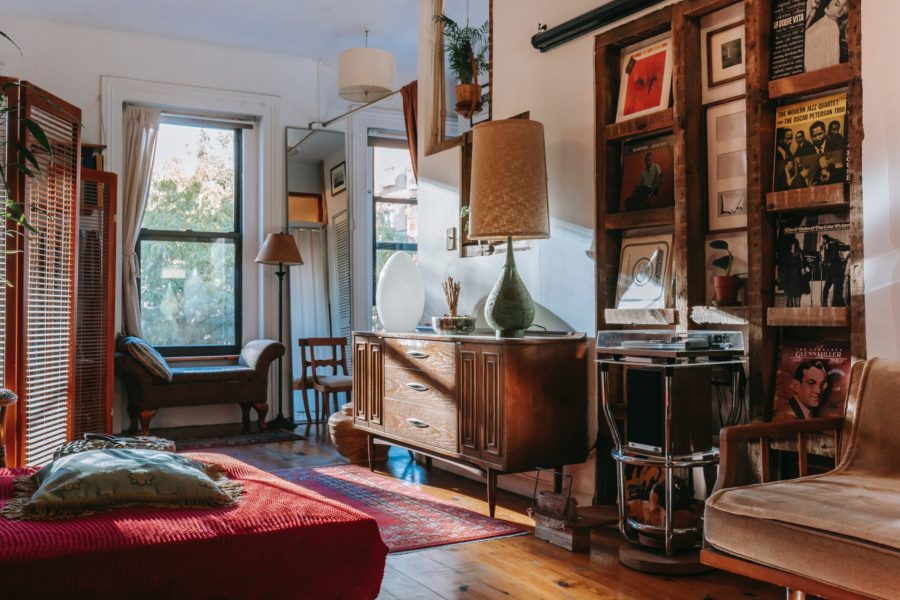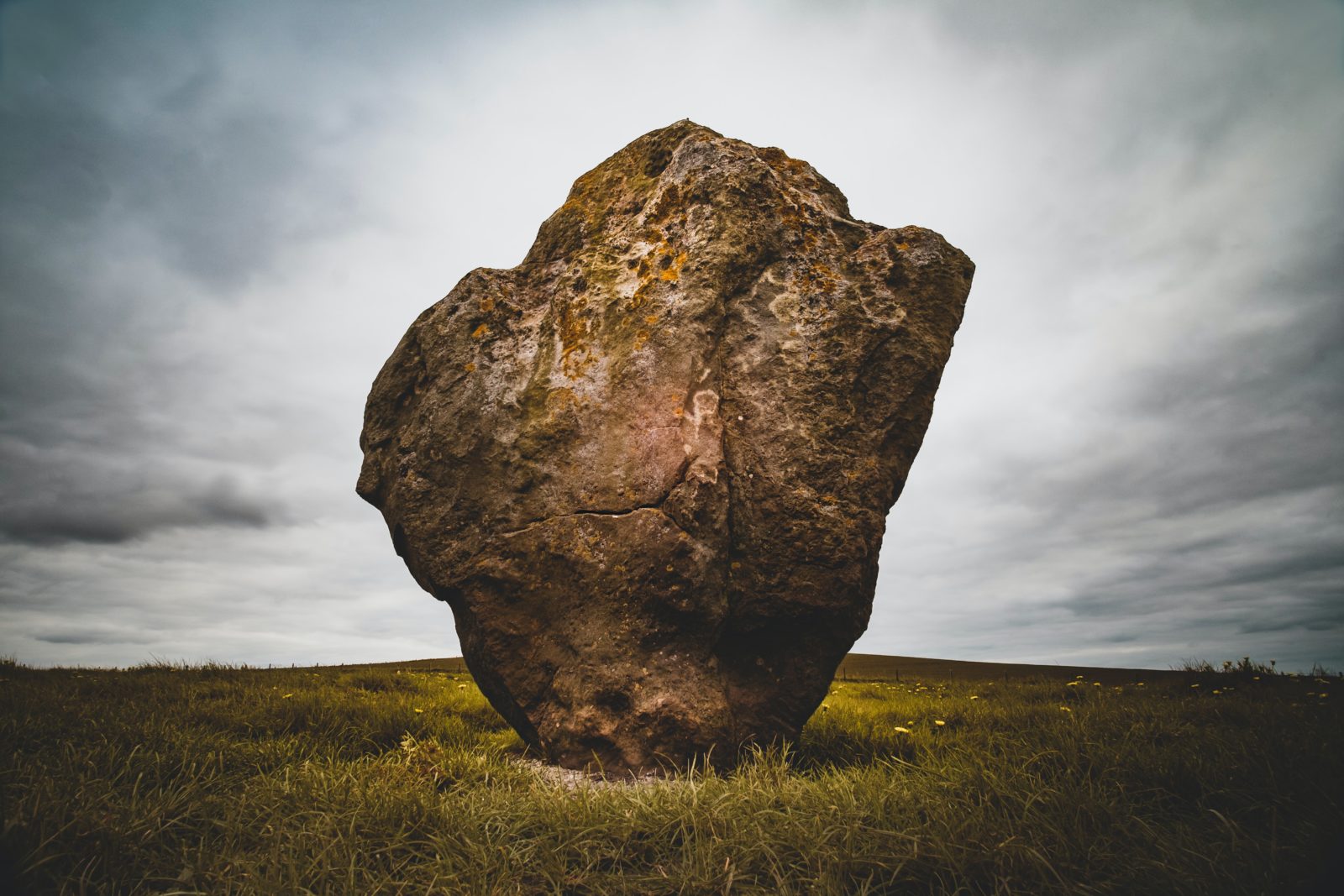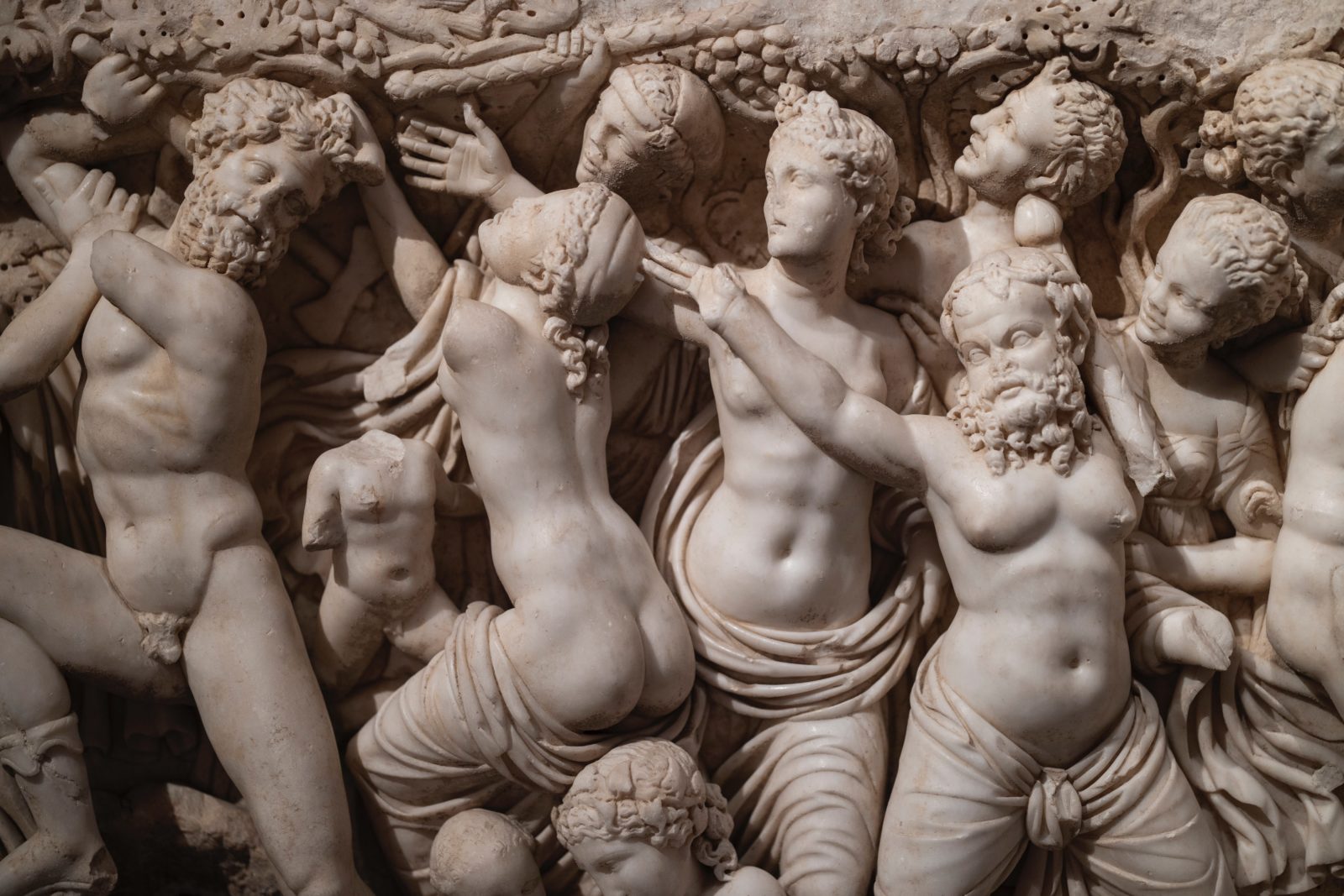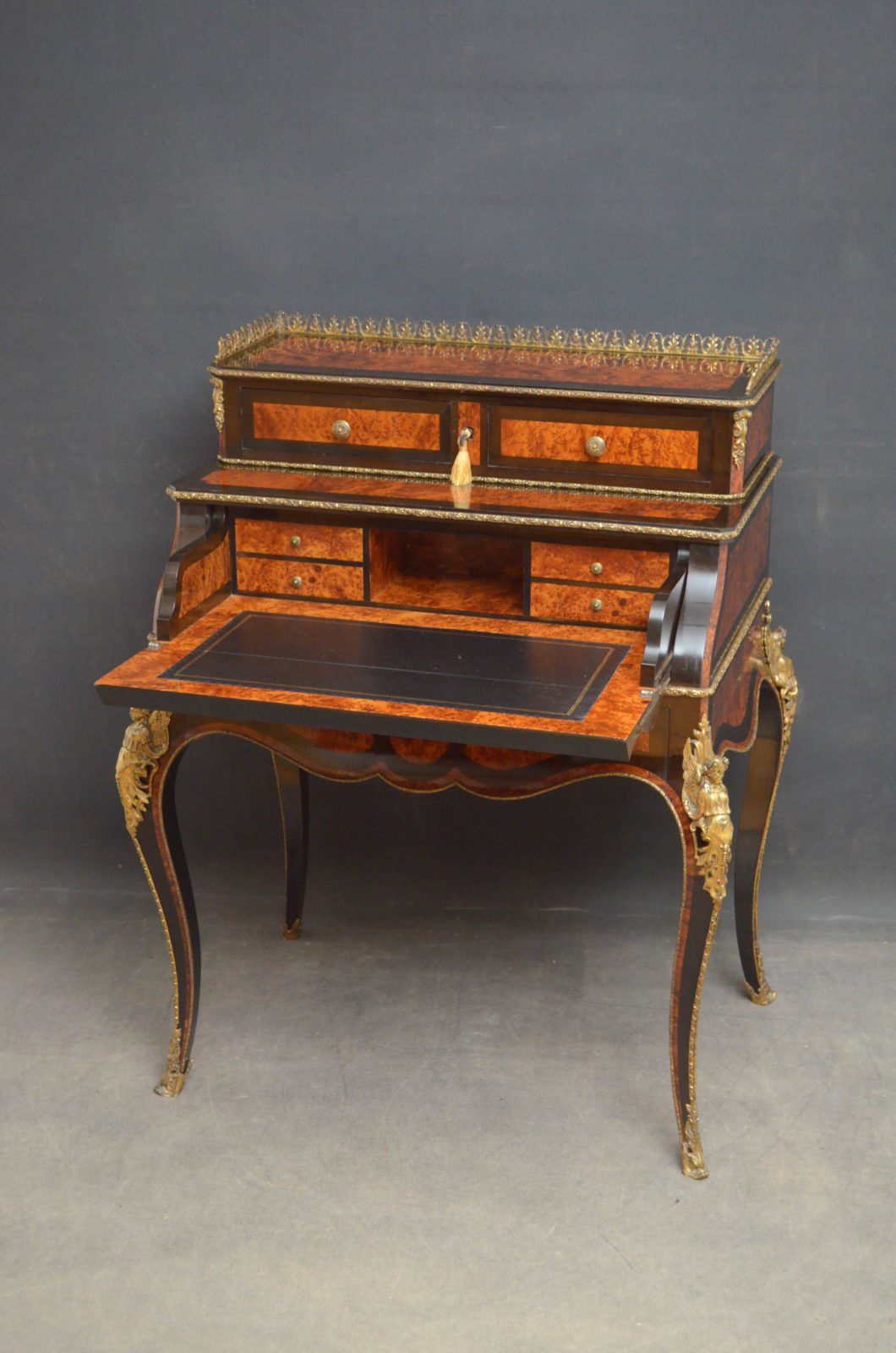
The concept of furniture is something we take for granted nowadays. Need to sit down? Take a chair. Going to bed for the night? Lie down in bed. Need somewhere to keep your clothes? Put them in the dresser. But has it always been that way?
Furniture as a concept has an interesting development throughout history. Where did it all begin?
Browse our selection of antique furniture.
When humans first started roaming the earth, we were a nomadic species. We moved from place to place, searching for food, shelter, and generally safer living conditions. This lifestyle meant that furniture wasn’t really necessary – why create something heavy that’s just another thing for you to carry around?
Instead the first humans began turning their environment to their favour wherever they settled. As such rudimentary tables, chairs, and beds could be used from appropriately shaped rocks or cobbled together from wood and leaves. Gradually, however, these communities found comfortable surroundings and began to settle.
As they formed agricultural societies and settled, crafting larger and more permanent objects of furniture became a more practical prospect, which is where more complex furniture made from wood, stone, or even animal bones, became the norm. Due to the perishable materials used, almost none of these examples survive today.
The Neolithic Skara Brae village in Scotland is an exception, however, and dates from between 3100-2500 BC. The houses of Skara Brae have a broad range of early furniture, including stone shelves, dressers, cupboards, and beds.
 Image Courtesy of: https://unsplash.com/@zoltantasi
Image Courtesy of: https://unsplash.com/@zoltantasi
Along side Skara Brae, elsewhere in the world, the Bronze Age civilisations were also beginning to experiment with furniture design. Through society’s gradual refinement, so too the approach to furniture making became more complex. This is the point where simple and practical craftsmanship began to morph into more of an artform.
The Ancient Greeks were, as in so many things, pioneers in this – one of their many breakthroughs was the development of curved features in furniture, such as table legs or chair backs. Many Ancient Greek design cues are still found in contemporary furniture today, such was the purity and practicality of the designs they created.

Image Courtesy of: https://unsplash.com/@enginakyurt
Ancient Egyptian furniture is one of the rare exceptions to the rule that antique furniture doesn’t survive. The Ancient Egyptians had many customs revolving around burying their dead with their earthly possessions. That meant that many items of furniture were safely locked away for centuries in dry, dark tombs. The lack of sunlight, moisture, and the sealed environment meant that when the tombs were eventually reopened, the furniture inside was still in excellent condition.
Ancient Egyptian furniture bears the artistic hallmarks of artisan craftsmen. Many pieces feature ornate designs relating to Ancient Egyptian Gods, and indicate that for wealthier Ancient Egyptians furniture was an ornate statement as well as a practical requirement.
We’re used to the concept of an idea being around the world in a matter of hours, but centuries ago it could take decades for techniques, approaches, and different ways of doing things to work their way around the glove. Not only around the globe, but in many cases, even different provinces within a single continent would do things in very different ways.
One such example is Ancient China. While around the world a focus was turning to more ornate and intricate designs, in Chinese communities, there was still a focus on practicality, religious and cultural decoration, and using locally available supplies. Ancient Chinese bamboo techniques are so revered they are in fact still used today by many craftsmen.
The Roman Empire collapsed in 476 CE, causing Europe to enter a period known as the Middle Ages. During this period the artistic and almost flamboyant approach to furniture decoration changed considerably. As famines, disease, and general unrest took hold much furniture was created with pure practicality in mind, rather than for beauty or style.
For the most part, this furniture was made from wood, as it was relatively abundant, locally sourced, easy to work with, and fairly long-lasting. As much of the wood wasn’t properly treated, however, very few items of Middle Age furniture remain today, as most everyday furniture has long succumbed to the effects of damp and damage.
The Renaissance period happened between the 14th and 17th Centuries, and generally saw a shift towards more historic and biblical themes and away from the established Gothic designs. A return was made to the Ancient Greek and Classical Roman ethos of society, and this is born out in the furniture
The design, appearance, and ornamental characteristics of furniture were once again becoming of key importance. Many dressers and chests, for example, would bare intricate artwork depicting historical scenes. Horizons were beginning to broaden in terms of the materials being used, too, with marble and mosaic becoming more common.
With furniture now once more being prized and revered for its decorative qualities, as well as its function, from the 17th Century onward it became a true luxury statement. As European royals and aristocrats became wealthier and more comfortable flaunting said wealth, the ornate nature of furniture took a turn towards outright opulence.
This was particularly notable in France, where King Louis XIV spent ferociously in his quest to have only the best. His furniture was exceptionally ornate, and in many cases manufactured from imported materials. This would include exotic woods, precious metals, and ivory to name just a few. The French craftsmen serving these more refined requirements would become known globally as masters of their art, inspiring future furniture makers for centuries to come.
As the period of monarchic excess wore on into the 18th Century, there also rose a new movement – named Gothic Revival. Gothic revival antiques and architecture sought to bring a more subtle style into focus, reminiscent of the prevailing Gothic styles popular several centuries earlier – Gothic Revival styles are still popular today.

While the reign of Louis XIV, XV, and XVI were characterised by many as the Golden Age, into the 19th Century there was a revival of the designs those Kings had so revered – namely European Rococo and Neoclassical.
Furniture makers were able to capitalise on new and improved furniture making techniques, as well as consistent improvements in both national and international communication, to seamlessly blend older styles with cutting edge quality. They were also able to draw their inspiration from further afield, using a broader array of materials. In the 19th Century there was an uptake of the use of more exotic woods, such as mahogany, rosewood, and ebony, as they became more accessible.
There were also new developments to be found in the 19th Century. One, for example, was the display cabinet. A piece of furniture that exists specifically to display the precious possessions and ornaments of the owner. Another increasingly popular new invention was the Bonheur du jour, a ladies writing desk with small elegant built-in oddments drawers.
In the 19th Century, we also see a distinctly growing popularity of the notion of privacy. Cabinets, dressing tables, and particularly writing desks, were increasingly commonly built to be lockable. The concept of locking away one’s precious possessions, or keeping documents, papers, and letters private in a writing desk compartment, was becoming a standard. This was born out of the Victorian developing societal norms of prudency, privacy, and personal responsibility.

Through the mid-to-late 19th Century and into the 20th Century we begin to see the effects of industrialisation in all elements of society, but particularly manufacturing. This, of course, had a knock-on effect on furniture production.
Man-made materials were increasingly common, particularly plastics, which brought down the cost of furniture. Increasing population numbers and the ease of purchasing meant that the hand-made approach was simply not quick enough, so the role of the artisan was gradually reduced in mainstream furniture production. They were instead taken over by mechanised processes.
The 20th Century has seen developments in all manner of artistic design movements, ranging from Arts and Crafts, through to Art Nouveau and the Art Deco, through into Modernism. Another concept that has developed through the 20th Century is that of Minimalism, a stark contrast to the wilful opulence and over-the-top design choices of a couple of centuries previous.
This varied approach to furniture through history means that now in the 21st Century there’s a broad range of designs, styles, and options to choose from when browsing antique furniture. The only arbiters are your taste and preferences.
| Cookie | Duration | Description |
|---|---|---|
| cookielawinfo-checbox-analytics | 11 months | This cookie is set by GDPR Cookie Consent plugin. The cookie is used to store the user consent for the cookies in the category "Analytics". |
| cookielawinfo-checbox-functional | 11 months | The cookie is set by GDPR cookie consent to record the user consent for the cookies in the category "Functional". |
| cookielawinfo-checbox-others | 11 months | This cookie is set by GDPR Cookie Consent plugin. The cookie is used to store the user consent for the cookies in the category "Other. |
| cookielawinfo-checkbox-necessary | 11 months | This cookie is set by GDPR Cookie Consent plugin. The cookies is used to store the user consent for the cookies in the category "Necessary". |
| cookielawinfo-checkbox-performance | 11 months | This cookie is set by GDPR Cookie Consent plugin. The cookie is used to store the user consent for the cookies in the category "Performance". |
| viewed_cookie_policy | 11 months | The cookie is set by the GDPR Cookie Consent plugin and is used to store whether or not user has consented to the use of cookies. It does not store any personal data. |